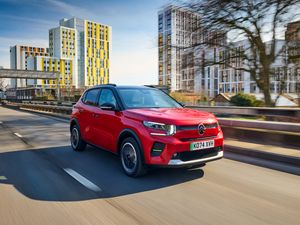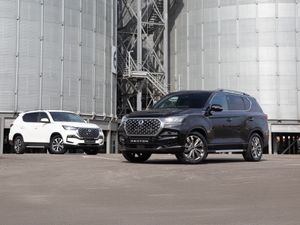Sustainable fuels: What are they and when can we see them in our vehicles?
As we head into the electrified future, the internal combustion engine is endangered, but can decarbonising the process be a way to keep it alive?

The motoring industry is undergoing one of the biggest revolutions in its history. Not only are we seeing the demise of the internal-combustion engine in favour of battery powered vehicles, but there are opportunities for other alternatives to become viable to power and decarbonise transportation.
One option is sustainable fuel, which, unlike fossil fuel, is made from renewable materials.

There are several different types of the substance. They can be a second generation of biofuels, which is made from agricultural waste such as straw, by-products from crops and food manufacturing or synthetic called e-fuels which are made from a combination of captured CO2 and hydrogen.
Switching from fossil fuels to sustainables could reduce carbon emissions by up to 80 per cent, according to the government’s Renewable Fuel Statistics report in 2019. Furthermore, it’ll mean that conventional cars can be kept on the road for longer which also benefits the environment without needing to unnecessarily throw perfectly working cars away to build new ones.

Mazda recently took every iteration of its MX-5 on a road trip from Land’s End to John O’Groats. The four cars were all running on sustainable fuel to showcase that any engine can run on the liquid and cover long distances without any issues. It was also a celebration of the beloved sports car’s 35th anniversary.
But, is there a reason why we haven’t seen a mass adoption of this fuel yet? And what is the difference between sustainable and synthetic alternatives?
We have spoken to Becky Mann, who works for Coryton Sustain Fuels to give us some clearer ideas of what to expect from the future.
Does an internal combustion engine need any modifications to run on the fuel?
“No alterations are needed to either the cars or the forecourts that serve them. Sustain fuels offer a drop-in solution for everyday road cars which would typically run regular pump unleaded petrol. Sustain classic (available to the public from Motor Spirit) is specially formulated for classic vehicles but can be used by any vehicle which runs on petrol. It can be mixed with fossil fuel, with no issues at all and has less than one per cent ethanol content.”
Could we see this fuel replace fossil-fuels in the future?
“We certainly believe that sustainable fuel should play a role in our transition away from fossil-fuel, offering a drop-in solution for our existing fleet and infrastructure. Of course, there’s no silver bullet to the environmental challenges we face, we need to work towards using the right technologies for the right applications.
“However, we will have ICE vehicles on our roads for many decades to come, so it makes sense to try and tackle the emissions from that fleet.”

What’s the difference between sustainable fuel and synthetic e-fuels?
“There are three types of sustainable fuel. Sustain is an advanced biofuel that includes second generation agricultural waste. Biofuel is made by fermentation of plant-based material, hydrotreatment or esterification of plant based-oils. First generation uses crops as its source of biomass, the second generation uses waste as its source of biomass and the third generation uses microorganisms as its source of biomass.”
She added: “Synthetic fuels are a set of hydrocarbon fuels made using CO, CO2 and hydrogen via syngas and Fischer-Tropsch-type processes. E-fuels are a subset of synthetic fuels relying on renewable energy to power the process to harness CO/CO2 and hydrogen. Recycled carbon fuels are fuels produced from fossil wastes that cannot be avoided, reused or recycled. Its feedstocks include industrial waste gases and the fossil-derived fraction of municipal solid waste such as non-recyclable plastic.”
How can we drive down the cost of sustainable fuel to bring it to the mass market?
“Like anything, there are economies of scale – so if demand increases, costs will reduce. We’d also like to see government support for this as there has been for other green initiatives, which could help the industry to scale up and bring down costs. Bear in mind that a large proportion of fuel cost is made up of tax – fuel duty.”
What are Sustain Fuels goals for the future?
“To continue our mission to create a cleaner future through innovation, expertise and the expansion of our Sustain brand.”





